Global iron ore prices reach record highs due to construction boom in China and EU
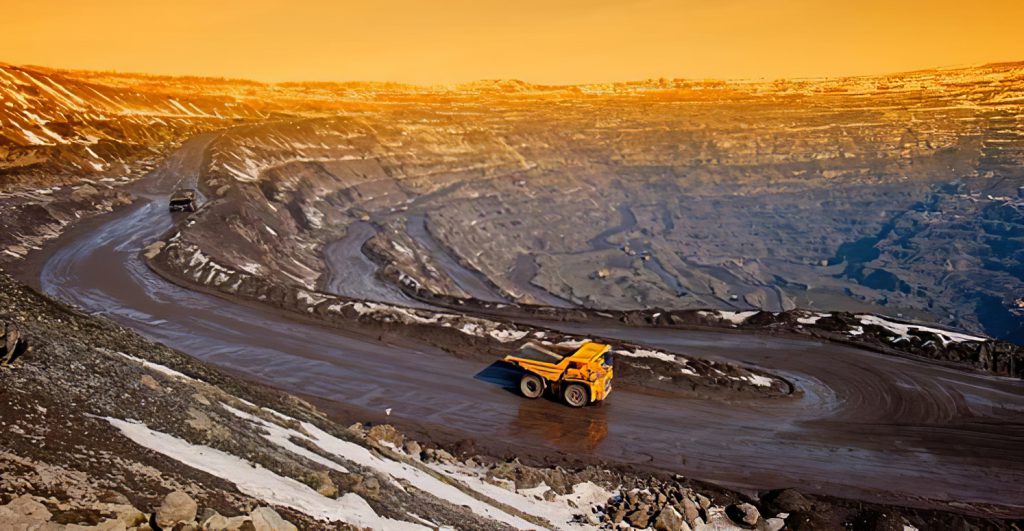
By Eugene Gerden
Global prices for iron ore reached record highs amid the ongoing construction boom in China and the expected reduction of supplies from Brazil.
So far, prices have already hit a seven-year high and continue to rise. The main factor is the demand from China, the world’s main importer of iron ore, where ore prices, as of now, have increased by 65% ​​over the year.
According to Bloomberg, Singapore futures are up 70% year-over-year, to a record high since trading began in 2013. In addition, futures on the Dalian Commodity Exchange about a week before Christmas jumped 10% for the first time in history crossing the mark of 1,000 yuan (US$152.9)/tonne and is now near US$180/tonne for 62% Fe CFR China.
According to Ayrat Khalikov, executive director of Center for Economic Forecasting of Gazprombank, one of Russia’s leading analysts in finance, iron ore prices have reached very high levels: Brazilian iron ore (65% Fe) is US$190/tonne, while Australian iron ore (62%) is US$169.97/tonne.
According to analysts, the main reason for higher prices is a high demand for steel as can be seen in the majority of global markets such as China, the United States and the EU. The main reason for this is the ongoing stimulation of growth of their economies with state incentives for their construction sectors. This, in turn, leads to a further growth of the demand for construction materials, including steel products.
Currently, China remains the major player in the global iron ore market. So far, most of the country’s iron ore requirements have been met by the supplies from Australia, which traditionally accounted for more than 70% of Chinese imports.
In January-October of 2020, China increased its share in world steel production from 54% in 2019 to 58%. At the same time, ore imports from Australia and Brazil to its market, in contrast, have declined, mainly due to the ongoing tensions between China and Australia, which have led to serious interruptions of supplies. The anticipation of further interruptions is pushing prices up.
China is the main customer of Australia, the world’s leading exporter of iron ore. However, since Australia called for a comprehensive investigation of circumstances and causes of the coronavirus pandemic, relations between the countries have become problematic. This has led to massive trade restrictions that applies to both countries.
For example, in October, China actually stopped accepting Australian coal, which resulted in ships with cargo worth more than US$500 million being stuck in the Chinese ports. As well, there were other restrictions on supplies of Australian goods and commodities to the Chinese market. The possibility of extending restrictions of supplies of iron ore have forced Chinese buyers to build up inventories.
At the same time, Brazil, the second largest ore exporter to China, may also face problems during the supply of its ore to China and other global markets within the next several months. So far, the Brazilian mining giant Vale has already cut its production forecasts for the next two years. In 2020 the company expected to produce more than 310 million tonnes in 2020; however, in reality the final output will not exceed 300-305 million tonnes. Next year these figures will unlikely reach 315 million tonnes compared to initially the planned 318 million tonnes for 2021.
Right now, some of Chinese largest metals’ producers have already applied to the national State Administration for Market Regulation and the Securities Commission with a request to investigate pricing in the iron ore market.
In its statement, an official spokesman of China Iron and Steel Association (CISA), a public association, which represents Chinese producers, said “the current rise in iron ore prices is contrary to the fundamental parameters of the market supply and demand, significantly exceeding any expectations of smelters, and has clear signs of major speculation which takes place on the market at present.”
According to analysts, China is currently making efforts to restrict a further growth in prices with little effect.
As analysts also believe, prices are unlikely to go down short term; however, the level of US$155-160/tonne is still considered very high.
There is a possibility that the launch of several large-scale investment projects next year should eliminate the existing imbalance of supply and demand in the market although that may take place only in the middle term.
According to an official spokesman of Severstal, one of Russia’s largest steel producers, the existing shortage in the global steel market will drive prices upward for some time to come.
Still, most producers hope for the inevitable stabilization of the market soon, as the deferred demand will end, while the level of supply will react to rising prices.
On December 9, Viktor Rashnikov, the main shareholder of the Magnitogorsk Iron and Steel Works, one of the world’s largest iron and steel companies based in Russia said that, according to his expectations, Vale’s production would return to target levels next year, while the Chinese industrial output next year will be comparable to the figures of 2020. That should lead to stabilization of global iron ore prices.
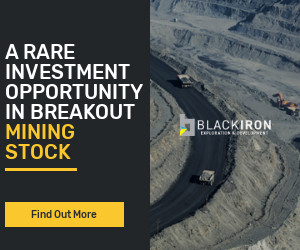 Black Iron Inc.‘s [BKI-TSX; BKIRF-OTC; BIN-FSE] 100%-owned Shymanivske iron ore project is the top ranked, by market intelligence firms CRU and Wood MacKenzie, undeveloped iron ore project globally and is on the brink of securing funding for project construction. The project is located in Kryviy Rih, approximately 330 km southeast of the capital of Kiev, central Ukraine surrounded by seven other operating iron ore mines, including the open pit mines of ArcelorMittal and Metinvest/Evraz Steel only 2 km distant.
Black Iron Inc.‘s [BKI-TSX; BKIRF-OTC; BIN-FSE] 100%-owned Shymanivske iron ore project is the top ranked, by market intelligence firms CRU and Wood MacKenzie, undeveloped iron ore project globally and is on the brink of securing funding for project construction. The project is located in Kryviy Rih, approximately 330 km southeast of the capital of Kiev, central Ukraine surrounded by seven other operating iron ore mines, including the open pit mines of ArcelorMittal and Metinvest/Evraz Steel only 2 km distant.
The project is also surrounded by steel mills in Europe, Turkey and the Middle East and offers a 20% to 25% shorter transport distance to growth markets in India and China compared to North and South American mines.
Black Iron’s project is favourably situated in a region with well-developed infrastructure. The company has Letters of Intent for electric power (140MW) and natural gas (900m3/hr @ 85kPa). A Letter of Intent is also in place for up to 20 MTpa of rail capacity from the mine site to the Port of Yuzhny (one of five ports) where another LOI is in place with the port operator for up to 9.5MTpa of shipping capacity for deliveries to seaborne iron ore markets. The project is only 2 km from the main state-owned rail line.
Defined by 37,000 metres of drilling, the Shymanivske Project contains a NI 43-101 compliant mineral resource of 646 Mt Measured and Indicated Resources, comprising 355 Mt Measured Resources grading 32.0% total iron and 19.5% magnetic iron, and Indicated Resources of 290 Mt grading 31.1% total iron and 17.9% magnetic iron, using a cut-off grade of 10% magnetic iron. There is an additional 188 Mt of Inferred Resources grading 30.1% total iron and 18.4% magnetic iron. There is potential for resource expansion to the south and at depth.
Black Iron is taking meaningful steps to place the iron deposit into production. To reduce up-front capital costs, a re-scoped Preliminary Economic Assessment uses a two-phased build-out of the mine and production plant.
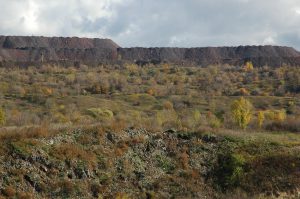 The first phase would be production of 4Mtpa of ultra-high-grade, low impurity, 68% Fe concentrate pellet feed with expansion to 8Mtpa starting in the third year of production and operational by year five. Using this phased build strategy coupled with Ukraine’s favourable exchange rate results in a projected pre-tax, post royalty, Internal Rate of Return of 41%, a payback period of 2.9 years and a US$1.9 billion Net Present Value at a 10% discount rate using a very conservative iron ore price of US$62/tonne for 62% iron content concentrate which is well below the current price of ~$165/tonne. The post-tax unlevered economics show an excellent 34% IRR and a US$1.4 billion NPV at a 10% discount rate.
The first phase would be production of 4Mtpa of ultra-high-grade, low impurity, 68% Fe concentrate pellet feed with expansion to 8Mtpa starting in the third year of production and operational by year five. Using this phased build strategy coupled with Ukraine’s favourable exchange rate results in a projected pre-tax, post royalty, Internal Rate of Return of 41%, a payback period of 2.9 years and a US$1.9 billion Net Present Value at a 10% discount rate using a very conservative iron ore price of US$62/tonne for 62% iron content concentrate which is well below the current price of ~$165/tonne. The post-tax unlevered economics show an excellent 34% IRR and a US$1.4 billion NPV at a 10% discount rate.
The 17-year Life-of-Mine strip ratio is estimated at a low 1:1 with average operating costs estimated at US$33/dmt FOB to produce the ultra-high-grade 68% iron ore concentrate. Using the US$62/tonne benchmark price for 62% iron content, the upgraded 68% iron content product would sell for US$97/tonne at the Port of Yuzhny after making adjustments for the higher iron content and subtracting shipping costs.
Annual average free cash flow is estimated at US$360 million pre-tax and US$301million post-tax.
Total capital expenditure to develop the mine, concentrator, infrastructure and tie-ins is estimated at US$452 million to produce an initial 4Mtpa of the ultra-high-grade 68% Fe concentrate. The Phase Two construction of the expansion to 8Mtpa would be completed in year five at a cost of US$364 million. The US$452 Phase One Capex will be 40% equity and 60% debt funding. The Phase Two US$364 million expansion to 8MTpa will be largely self-funded using free cash flow generated in Phase One.
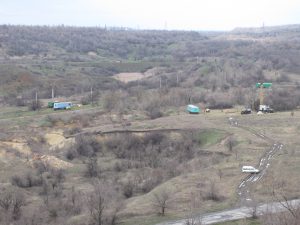 In 2020, Black Iron made substantial progress towards securing funds for project construction including the December signing of a non-binding royalty term sheet for US$100 million with a prominent U.S.-based institutional investor. The company also signed heads of agreements with two construction firms that include making a US$65 million investment and received expressions of interest from major European banks for US$260 – 300 million of debt. Discussions are currently ongoing with several steel mills and global traders including Glencore regarding the exchange of offtake rights for a meaningful investment in project construction. For 2021 the plan is to bring these investments to a binding state in preparation to start construction around year end.
In 2020, Black Iron made substantial progress towards securing funds for project construction including the December signing of a non-binding royalty term sheet for US$100 million with a prominent U.S.-based institutional investor. The company also signed heads of agreements with two construction firms that include making a US$65 million investment and received expressions of interest from major European banks for US$260 – 300 million of debt. Discussions are currently ongoing with several steel mills and global traders including Glencore regarding the exchange of offtake rights for a meaningful investment in project construction. For 2021 the plan is to bring these investments to a binding state in preparation to start construction around year end.
Key management of Black Iron is characterized by many years of experience. CEO Matt Simpson is former General Manager, Mining for Rio Tinto`s Iron Ore Company of Canada.
Black Iron’s mine development plans are taking place at an opportune time with steel products in demand around the world. In addition to convenient infrastructure, Ukraine is a mine-friendly country with a competitive corporate tax rate of 18%; less than half of other iron ore producing countries. Ukraine’s President Volodymyr Zelensky has stated his support for the project which has targeted production for 2023.
Black Iron has 260 million shares outstanding.
 High Tide Resources Corp. is a majority controlled private subsidiary of Avidian Gold Corp. [AVG-TSXV; AVGDF-OTCQB], a company with advanced-stage gold assets in Alaska and Nevada. Avidian is planning to take High Tide public in H1 2021.
High Tide Resources Corp. is a majority controlled private subsidiary of Avidian Gold Corp. [AVG-TSXV; AVGDF-OTCQB], a company with advanced-stage gold assets in Alaska and Nevada. Avidian is planning to take High Tide public in H1 2021.
High Tide has an option to earn a 100% interest in the 2,475-hectare Labrador West Iron Ore property in western Labrador from Altius Minerals Corp. [ALS-TSX]. The property is adjacent to Rio Tinto/IOC’s 23 MTPY Carol Lake Mine with all its infrastructure and within the same mining camp as Champion’s Bloom Lake Mine and Kami deposit, Arcelor Mittal’s Mont-Wright Mine and Tacora’s Scully Mine. The southern Labrador Trough region is Canada’s premier iron ore mining camp that has seen over 2 billion tonnes of iron produced over the past 60 years
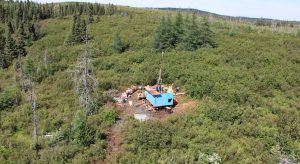 In 2020, High Tide drilled four verification holes with several broad intercepts that included 29.6% Fe over 314.7 metres and 26.8% Fe over 321.5 metres which lead to the completion, and SEDAR filing, of an NI 43-101 compliant technical report. For 2021, the company will follow up with an approximately 8-hole 2,500-metre drill program with the goal of day-lighting a maiden resource statement and potentially a PEA level study for Canada’s newest, and best located, iron ore deposit.
In 2020, High Tide drilled four verification holes with several broad intercepts that included 29.6% Fe over 314.7 metres and 26.8% Fe over 321.5 metres which lead to the completion, and SEDAR filing, of an NI 43-101 compliant technical report. For 2021, the company will follow up with an approximately 8-hole 2,500-metre drill program with the goal of day-lighting a maiden resource statement and potentially a PEA level study for Canada’s newest, and best located, iron ore deposit.
The property has been subject to advanced exploration techniques by Rio Tinto Exploration including airborne and ground geophysics, mapping, metallurgical test-work and diamond drilling. Between 2010 and 2012 Rio Tinto drilled 18 diamond drill holes totaling 4,227 metres, intersecting significant iron mineralization in multiple drill holes highlighted by hole 11LB0027, which yielded 279 metres at 29.8% Fe, including 157 metres at 31.9% Fe and 90 metres at 31.9% Fe. Iron mineralization starts at or near surface and is mainly hematite with areas of goethite and magnetite which is similar mineralization to the local iron ore mines.
The region is very well served with skilled labour, a paved highway as well as access to abundant low-cost hydroelectricity, and a common carrier railway with a currently under-utilized 80 million tonnes per year capacity allowing iron ore products to be delivered to the deep-water port of Sept Isles, Quebec providing year-round access to global markets. Labrador is a mining-friendly jurisdiction with government support at municipal, provincial and federal levels.
Headed by iron ore veteran Steve Roebuck, P.Geo., President, the High Tide management team is comprised of career explorationists and business-oriented mining professionals. Roebuck is of the view that robust iron ore pricing will continue for the next several years as demand is forecast to remain very strong from the steel industry. Additionally, the Labrador iron ore camp hosts high-quality ores low in phosphorus, alumina, sulphur and alkalies that is far superior to other iron ore regions and is exactly what steel mills are seeking. The benchmark 62% Fe Iron Ore is currently selling for plus US$160/tonne with high-grade +65% Fe products now selling at a ~$10-20/tonne premium over the 62% Fe products. For information contact Steve Roebuck at mobile +1 (905) 741-5458 or email sroebuck@avidiangold.com.
High Tide Resources has 31.91 million shares outstanding.
 Century Global Commodities Corp. [CNT-TSX] controls several iron ore deposits in Canada with resources totaling 8.4 billion/t M+I and 11.0 billion/t inferred. Today, however, the primary focus is the Joyce Project, a 100%-owned 2.5 million t/a direct shipping iron ore (DSO) open pit in Canada’s prolific Labrador Trough.
Century Global Commodities Corp. [CNT-TSX] controls several iron ore deposits in Canada with resources totaling 8.4 billion/t M+I and 11.0 billion/t inferred. Today, however, the primary focus is the Joyce Project, a 100%-owned 2.5 million t/a direct shipping iron ore (DSO) open pit in Canada’s prolific Labrador Trough.
Joyce is in Newfoundland and Labrador about 20km from the town of Scheffervillle, Quebec, a DSO mining centre. With reserves of 17.2 million/t of 59.7%Fe, the mine life will be seven years with production mostly at the industry standard 62%Fe.
Century plans to mine higher-grade in the first five years to take advantage of selling lump and fines products in a favourable price environment and potentially taking advantage of futures market contracts for up to four years. As a fast-to-production mine project Joyce is strongly differentiated from traditional iron ore mines that can take five or more years to reach full production.
The mine will be a simple open pit followed by crushing to lump and fines, trucked over a new 43-km road to an existing rail link which connects to a Sept-Iles port. The project will ship into the global seaborne market which is driven almost exclusively by China demand.
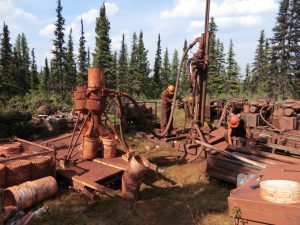 With over C$40 million spent to date, Joyce reserves are fully defined, a 2015 feasibility is in place and an Environmental Impact Study is ready to submit to Governments, together with a planned timely 30-month schedule to full production; set to capture the iron ore price up-swing cycle currently underway.
With over C$40 million spent to date, Joyce reserves are fully defined, a 2015 feasibility is in place and an Environmental Impact Study is ready to submit to Governments, together with a planned timely 30-month schedule to full production; set to capture the iron ore price up-swing cycle currently underway.
Iron ore has been the best performing metal commodity in 2020 trading at a price level the market has not seen for almost 10 years. The capped global mine supply and strong Chinese demand has built tremendous market momentum, recently driving prices close to US$180/tonne (62% Fe CFR China).
After a five year price pull-back, over-shadowed by excessive major new mine projects coming on stream, China’s increasing demand has absorbed the new supply and once again the market outlook is very positive for a sustained price up-cycle, with few major new mines expected over the next five years.
The 2015 Joyce feasibility study estimated a capital cost of C$260 million and an operating cost FOB Sept-Iles at US$46.60/tonne. The iron ore price used was US$95/tonne generating post-tax NPV8 of C$61.4 million and an IRR of 13.7%. In the next few months Century will update the feasibility study incorporating opportunities to reduce both capital and operating costs, while also using a new iron ore price reflecting the market up-cycle.
Century is uniquely positioned to rapidly move Joyce forward by updating the 2015 feasibility study and expeditiously completing permitting. To finance the next phase of development, Century plans to spin-out Joyce as a stand-alone listed company while pursuing phases of financing to advance the project to a production decision within 12 months and full production after a further 18 months.
Sandy Chim, CPA, CA, MBA, Century President and CEO has 35+ years of international capital market and mining experience and lead’s an experienced Toronto based mining team.
We seek safe harbour.
